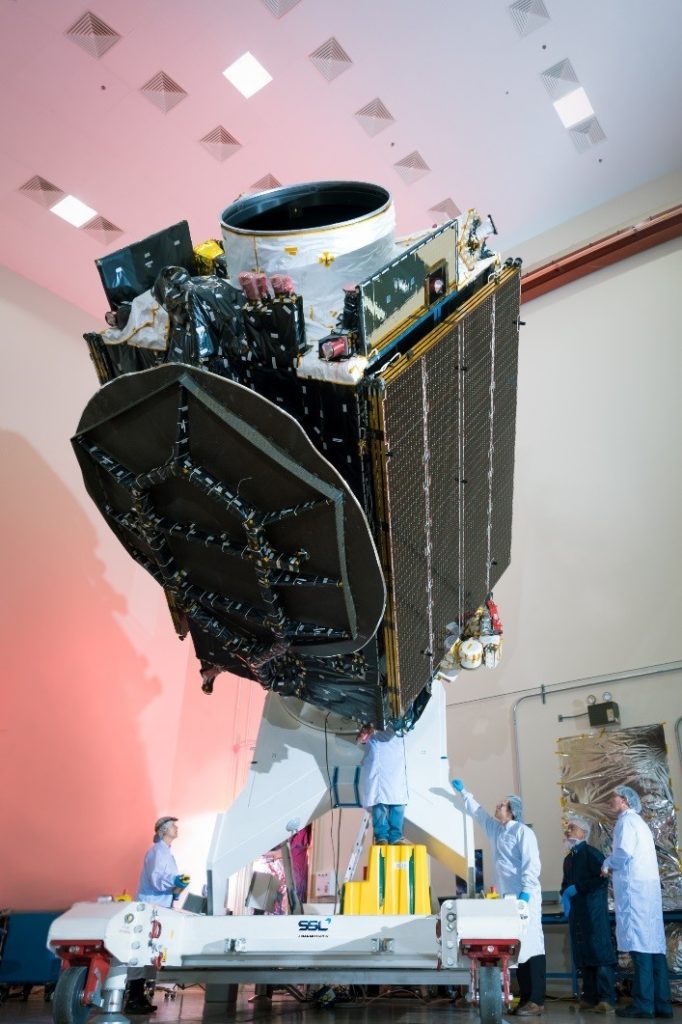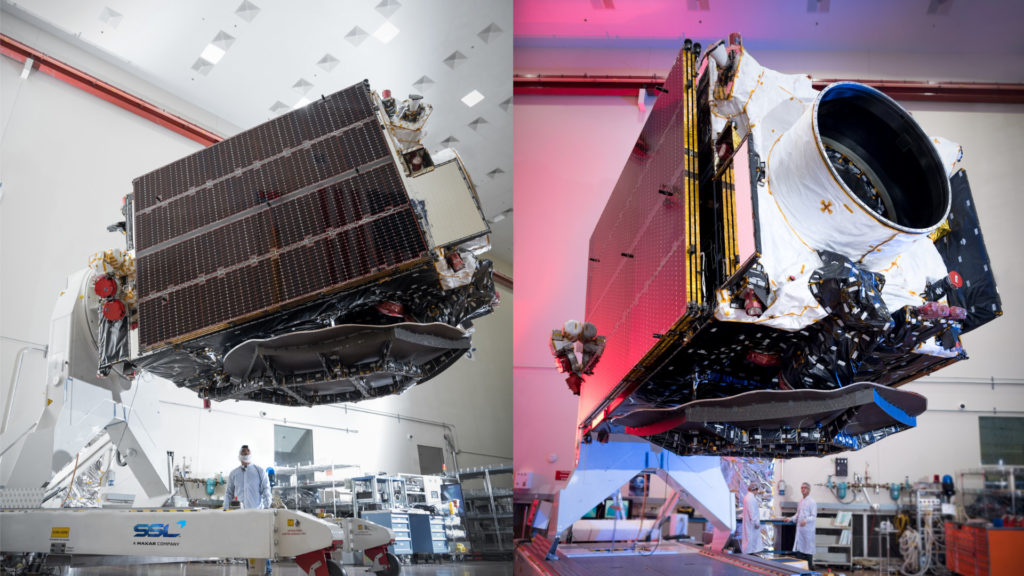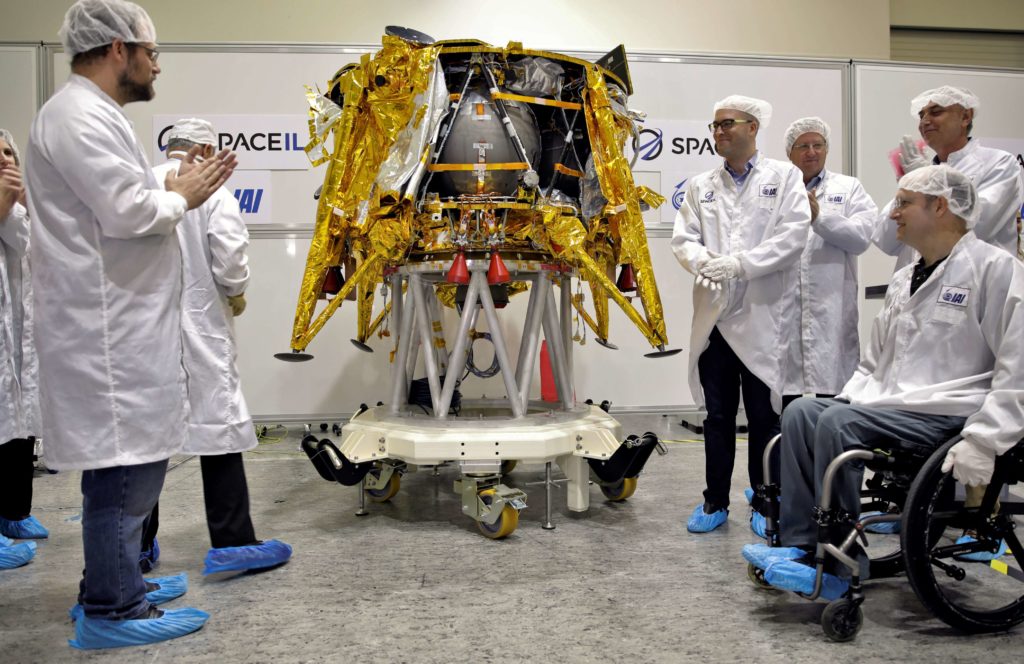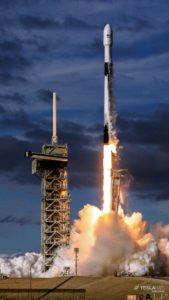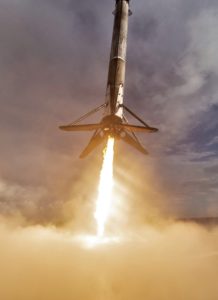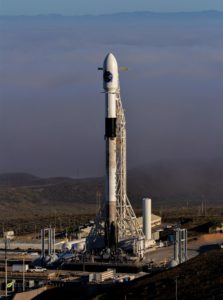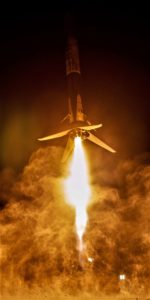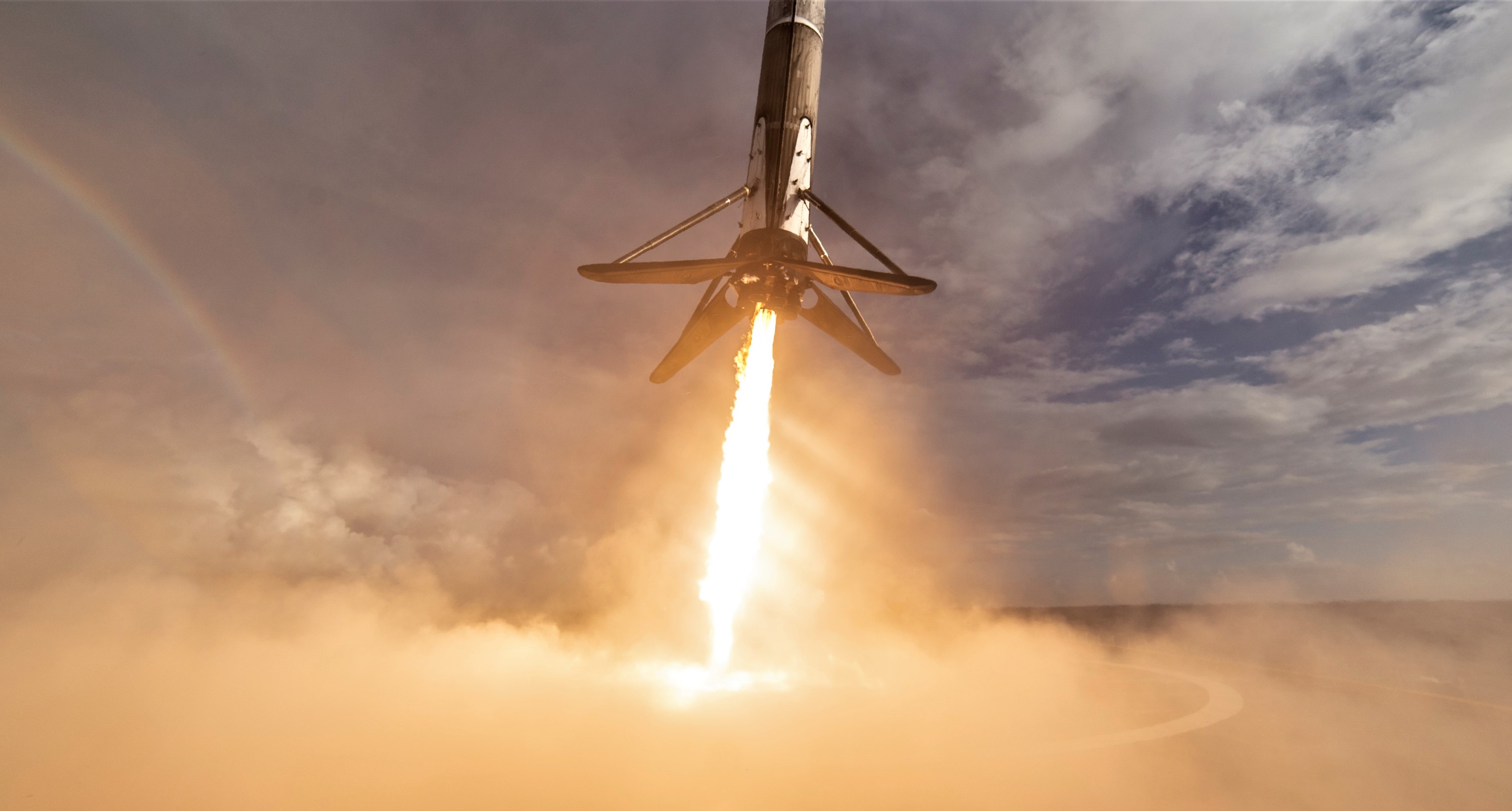

News
SpaceX nears Falcon 9 lunar rideshare launch as main satellite arrives in FL
SpaceX and customers Pasifik Satelit Nusantara (PSN), SpaceIL, and Spaceflight Industries are reportedly one month away from the NET February 18th launch of Indonesian communications satellite PSN VI (since renamed Nusantara Satu), commercial moon lander Beresheet, and additional unspecified smallsats.
In an encouraging sign that the mission’s launch date might hold, the PSN VI communications satellite – manufactured and delivered by Space Systems Loral (SSL) – arrived at SpaceX’s Cape Canaveral, Florida payload processing facilities in late December 2018 and is likely to be joined by SpaceIL’s Beresheet spacecraft in the next few weeks.
https://twitter.com/sslmda/status/1082427646921846784
Easily the most exotic rideshare mission yet in terms of the sheer variability and newness of almost every aspect, communications satellite PSN VI will not only be joined by the world’s first commercial lunar lander but also play host to rideshare organizer Spaceflight’s first dedicated rideshare mission to a high-energy geostationary transfer orbit (GTO), stretching approximately 200 to 36,000 km (120 to 22,000 miles) above Earth.
Led in large part by satellite contractor SSL’s recently-introduced PODS method of attaching rideshare satellite dispensers to larger geostationary satellites, the company’s main manufacturing focus, GTO or even full-GEO rideshare opportunities could open all kinds of doors for exotic but affordable smallsat missions beyond Earth orbit. If successfully implemented, one could foresee commercial, government, or academic entities with budgets that would have originally had them laughed out of doors actually be able to support their own dedicated missions to the Moon and perhaps even to other planets, asteroids, or comets.
Big Science, Small Packages
A pair of tiny, experimental spacecraft called #MarCO flew to Mars and fulfilled a their mission yesterday, relaying near-real-time data during @NASAInSight’s #MarsLanding. Find out more about the record-setting CubeSats: https://t.co/JOAaM2lHjx pic.twitter.com/IlNesoEonq— NASA JPL (@NASAJPL) November 27, 2018
Less than coincidentally, JPL (Jet Propulsion Laboratory) successfully launched, tested, and demonstrated a pair of small signal relay cubesats as viable communications infrastructure during Mars lander InSight’s November 2018 landing attempt, becoming the first smallsats ever to operate in deep space. While the utility of each MarCO cubesat was very limited, the program was an extremely successful technology demonstration and has likely opened a number of doors for smallsat passengers to join future interplanetary missions. Already, the European Space Agency (ESA) hopes to include multiple cubesats on an asteroid defense-focused mission to the Didymous asteroid system in the 2020s.
A couple of #CubeSats will join #ESA’s Hera mission towards a binary asteroid system to perform additional bonus science alongside the main mothership. #newspace #cubesat #space https://t.co/gu3BS4sgL0 pic.twitter.com/13iw7gh1u6
— D-Orbit (@D_Orbit) January 8, 2019
While SSL apparently tested PODS with success on the communications satellite Hispasat 30W-6, launched by SpaceX in March 2018, it appears that PSN VI may be the first purely commercial use of SSL’s offerings. Whatever the complex relationship is, it appears that PSN VI’s PODS were co-opted (ordered?) by Spaceflight, who then sold those spaces and managed the integration of customers with spacecraft that needed an orbit truly unique for cubesats.
Given the fact that there has been almost complete silence on Spaceflight’s GTO-1 rideshare mission and that the most recent use of PODS on Hispasat was reportedly funded and used by military research agency DARPA, it may actually be reasonable to conclude that Spaceflight is acting as the middleman for a number of satellites built or owned by military agencies, potentially explaining the radio-silence from Spaceflight’s normally talkative communications team.
- PSN-6, an SSL-built communications satellite weighing several thousand kilograms, arrived in Florida roughly 10 days ago. (SSL)
- PSN-6, an SSL-built communications satellite weighing several thousand kilograms, arrived in Florida roughly 10 days ago. (SSL)
- SpaceIL’s Beresheet moon lander. (SpaceIL)
- Beresheet is seen here prior to the spacecraft’s flight from Israel to Florida. (SpaceIL/IAI)
Regardless, this launch is bound to be a fascinating one from a trajectory design perspective. Whether or not Falcon 9’s upper stage is actually going to be involved in the task of helping lunar lander Beresheet on its way to the Moon, info from manufacturer and operator SpaceIL suggests that the small ~600 kg spacecraft will rely on an eccentric method of shifting orbits from around the Earth to intercept the Moon. Over the course of several months of small nudges in the right direction, Beresheet will eventually – and very gradually – oscillate on the tip of the gravitational peak between the two planetary bodies until it eventually slips down the lunar side to eventually intercept the Moon. While very slow, this optimized trajectory will be extremely efficient, allowing as much propellant as possible to be saved for the actual task of landing on the Moon.
Which rocket slipper fits?
Come launch day, the combined mass of PSN VI (Nusantara Satu), Beresheet, and unknown rideshare passenger spacecraft will most likely fall somewhere between 5500 and 6000 kg (~12,000-13,500 lbs), indicating that SpaceX’s Falcon 9 should be more than capable of placing the stack of satellites into a healthy geostationary transfer orbit before attempting to land aboard drone ship Of Course I Still Love You (OCISLY).
- Pad 39A seen after most extraneous Shuttle-era hardware had been removed, November 2018. (Tom Cross)
- Falcon 9 B1047.2 is seen here conducting its second successful drone ship landing. (SpaceX)
- Falcon 9 B1048 appears out of the fog prior to its second orbital-class launch. (Pauline Acalin)
- Falcon 9 B1048.2 landed at LZ-4 after its second successful launch. (SpaceX)
The question that remains, then, is which Falcon 9 rocket will be tasked with launching the unique mission. Given that SpaceX appears to be rushing full-speed-ahead to complete the next Falcon Heavy in time for a late-February or March launch debut, it seems very unlikely that SpaceX could preserve that aggressive FH launch schedule while also preparing a separate, new Falcon 9 booster for PSN VI. If that’s the case, then the two options at hand are Falcon 9s B1047.3 and B1048.3, both of which have previously launched twice and are currently at SpaceX’s Florida facilities.
In other words, it appears that SpaceX’s first commercial launch to the Moon might lift off on a flight-proven Falcon 9 booster, an unintended but thoroughly fitting precursor to what is hopefully a future full of highly reusable rockets and interplanetary (as in between two or more planetary bodies) spaceflight.
News
Tesla UK sales see 14% year-over-year rebound in June: SMMT data
The SMMT stated that Tesla sales grew 14% year-over-year to 7,719 units in June 2025.

Tesla’s sales in the United Kingdom rose in June, climbing 14% year-over-year to 7,719 units, as per data from the Society of Motor Manufacturers and Traders (SMMT). The spike in the company’s sales coincided with the first deliveries of the updated Model Y last month.
Model Y deliveries support Tesla’s UK recovery
Tesla’s June performance marked one of its strongest months in the UK so far this year, with new Model Y deliveries contributing significantly to the company’s momentum.
While the SMMT listed Tesla with 7,719 deliveries in June, independent data from New AutoMotive suggested that the electric vehicle maker registered 7,891 units during the month instead. However, year-to-date figures for Tesla remain 2% down compared to 2024, as per a report from Reuters.
While Tesla made a strong showing in June, rivals are also growing. Chinese automaker BYD saw UK sales rise nearly fourfold to 2,498 units, while Ford posted the highest EV growth among major automakers, with a more than fourfold increase in the first half of 2025.
Overall, the UK’s battery electric vehicle (BEV) demand surged 39% to to 47,354 units last month, helping push total new car sales in the UK to 191,316 units, up 6.7% from the same period in 2024.
EV adoption accelerates, but concerns linger
June marked the best month for UK car sales since 2019, though the SMMT cautioned that growth in the electric vehicle sector remains heavily dependent on discounting and support programs. Still, one in four new vehicle buyers in June chose a battery electric vehicle.
SMMT Chief Executive Mike Hawes noted that despite strong BEV demand, sales levels are still below regulatory targets. “Further growth in sales, and the sector will rely on increased and improved charging facilities to boost mainstream electric vehicle adoption,” Hawes stated.
Also taking effect this week was a new US-UK trade deal, which lowers tariffs on UK car exports to the United States from 27.5% to 10%. The agreement could benefit UK-based EV producers aiming to expand across the country.
News
Tesla Model 3 ranks as the safest new car in Europe for 2025, per Euro NCAP tests
Despite being on the market longer than many of its rivals, the Tesla Model 3 continues to set the bar for vehicle safety.

The Tesla Model 3 has been named the safest new car on sale in 2025, according to the latest results from the Euro NCAP. Among 20 newly tested vehicles, the Model 3 emerged at the top of the list, scoring an impressive 359 out of 400 possible points across all major safety categories.
Tesla Model 3’s safety systems
Despite being on the market longer than many of its rivals, the Tesla Model 3 continues to set the bar for vehicle safety. Under Euro NCAP’s stricter 2025 testing protocols, the electric sedan earned 90% for adult occupant protection, 93% for child occupant protection, 89% for pedestrian protection, and 87% for its Safety Assist systems.
The updated Model 3 received particular praise for its advanced driver assistance features, including Tesla’s autonomous emergency braking (AEB) system, which performed well across various test scenarios. Its Intelligent Speed Assistance and child presence detection system were cited as noteworthy features as well, as per a WhatCar report.
Other notable safety features include the Model 3’s pedestrian-friendly pop-up hood and robust crash protection for both front and side collisions. Euro NCAP also highlighted the Model 3’s ability to detect vulnerable road users during complex maneuvers, such as turning across oncoming traffic.
Euro NCAP’s Autopilot caution
While the Model 3’s safety scores were impressive across the board, Euro NCAP did raise concerns about driver expectations of Tesla’s Autopilot system. The organization warned that some owners may overestimate the system’s capabilities, potentially leading to misuse or inattention behind the wheel. Even so, the Model 3 remained the highest-scoring vehicle tested under Euro NCAP’s updated criteria this year.
The Euro NCAP’s concerns are also quite interesting because Tesla’s Full Self-Driving (FSD) Supervised, which is arguably the company’s most robust safety suite, is not allowed for public rollout in Europe yet. FSD Supervised would allow the Model 3 to navigate inner city streets with only minimal human supervision.
Other top scorers included the Volkswagen ID.7, Polestar 3, and Geely EX5, but none matched the Model 3’s total score or consistency across categories. A total of 14 out of 20 newly tested cars earned five stars, while several models, including the Kia EV3, MG ZS, and Renault 5, fell short of the top rating.
Elon Musk
Why Tesla’s Q3 could be one of its biggest quarters in history
Tesla could stand to benefit from the removal of the $7,500 EV tax credit at the end of Q3.

Tesla has gotten off to a slow start in 2025, as the first half of the year has not been one to remember from a delivery perspective.
However, Q3 could end up being one of the best the company has had in history, with the United States potentially being a major contributor to what might reverse a slow start to the year.
Earlier today, the United States’ House of Representatives officially passed President Trump’s “Big Beautiful Bill,” after it made its way through the Senate earlier this week. The bill will head to President Trump, as he looks to sign it before his July 4 deadline.
The Bill will effectively bring closure to the $7,500 EV tax credit, which will end on September 30, 2025. This means, over the next three months in the United States, those who are looking to buy an EV will have their last chance to take advantage of the credit. EVs will then be, for most people, $7,500 more expensive, in essence.
The tax credit is available to any single filer who makes under $150,000 per year, $225,000 a year to a head of household, and $300,000 to couples filing jointly.
Ending the tax credit was expected with the Trump administration, as his policies have leaned significantly toward reliance on fossil fuels, ending what he calls an “EV mandate.” He has used this phrase several times in disagreements with Tesla CEO Elon Musk.
Nevertheless, those who have been on the fence about buying a Tesla, or any EV, for that matter, will have some decisions to make in the next three months. While all companies will stand to benefit from this time crunch, Tesla could be the true winner because of its sheer volume.
If things are done correctly, meaning if Tesla can also offer incentives like 0% APR, special pricing on leasing or financing, or other advantages (like free Red, White, and Blue for a short period of time in celebration of Independence Day), it could see some real volume in sales this quarter.
You can now buy a Tesla in Red, White, and Blue for free until July 14 https://t.co/iAwhaRFOH0
— TESLARATI (@Teslarati) July 3, 2025
Tesla is just a shade under 721,000 deliveries for the year, so it’s on pace for roughly 1.4 million for 2025. This would be a decrease from the 1.8 million cars it delivered in each of the last two years. Traditionally, the second half of the year has produced Tesla’s strongest quarters. Its top three quarters in terms of deliveries are Q4 2024 with 495,570 vehicles, Q4 2023 with 484,507 vehicles, and Q3 2024 with 462,890 vehicles.
-

 Elon Musk4 days ago
Elon Musk4 days agoTesla investors will be shocked by Jim Cramer’s latest assessment
-

 News1 week ago
News1 week agoTesla Robotaxi’s biggest challenge seems to be this one thing
-

 Elon Musk2 weeks ago
Elon Musk2 weeks agoFirst Look at Tesla’s Robotaxi App: features, design, and more
-

 News2 weeks ago
News2 weeks agoSpaceX and Elon Musk share insights on Starship Ship 36’s RUD
-

 News2 weeks ago
News2 weeks agoWatch Tesla’s first driverless public Robotaxi rides in Texas
-

 News1 week ago
News1 week agoWatch the first true Tesla Robotaxi intervention by safety monitor
-

 News2 weeks ago
News2 weeks agoTesla has started rolling out initial round of Robotaxi invites
-

 Elon Musk2 weeks ago
Elon Musk2 weeks agoTesla to launch in India in July with vehicles already arriving: report

